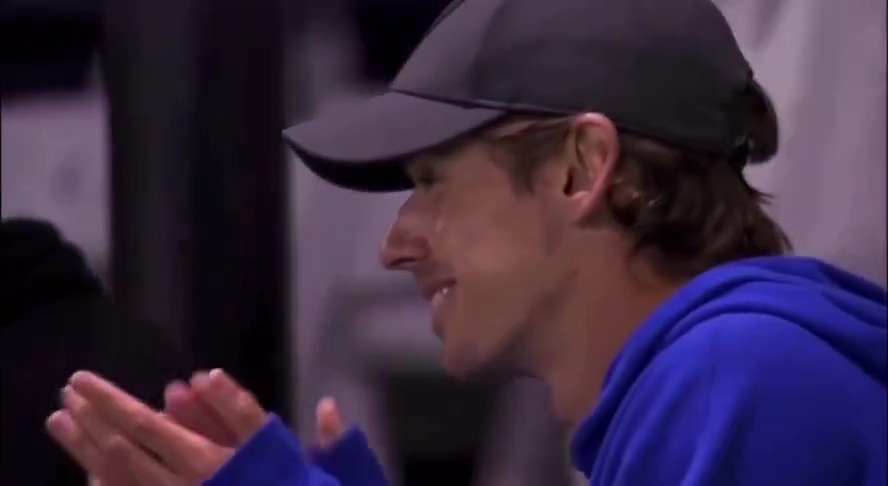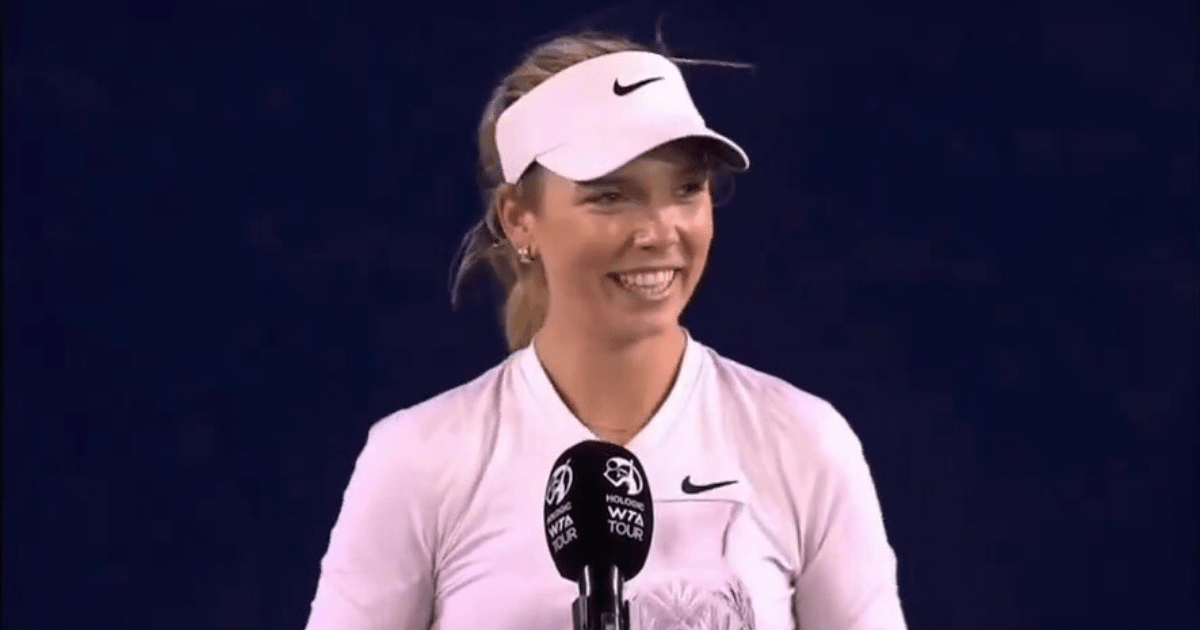Katie Boulter Wins San Diego Open Title
Katie Boulter made headlines by securing her first WTA 500 title at the San Diego Open, defeating Marta Kostyuk in a thrilling match.
Boyfriend's Jet-Setting Gesture
Alex de Minaur flew in from Acapulco to support Boulter, catching a red-eye flight to be by her side for the victory.
Boulter's Emotional Victory Speech
In her victory speech, Boulter thanked her support system and gave a special shout-out to her boyfriend for his efforts in being there for her.
Career Milestone for Boulter
The win marks a significant milestone in Boulter's career, propelling her to the 27th spot in the world rankings.

Boulter's Resilience on Display
Despite facing challenges during the match, Boulter maintained her composure and clinched the victory with an impressive performance.
Rising Star in Women's Tennis
Boulter's rise in the rankings positions her as a formidable player in the women's tennis circuit, with potential seed placements in major tournaments.
Heartfelt Moments at the San Diego Open
The event showcased emotional moments, including Kostyuk's tribute to her family in war-torn Ukraine and Boulter's dedication to her supporters.
Frequently Asked Questions
Can someone start playing tennis late and still become a professional?
Tennis is a sport that can be played at any age. While it will require more effort, you can still reach professional status. The success of an individual will be determined by their athletic ability, work ethics, dedication and the availability of quality coaching and competition. Late starters must engage in intensive, highly-focused training. While the path is likely to be longer, with talent, perseverance and dedication, achieving a professional standard is possible.
What role do mental and emotional aspects play in tennis training?
Tennis players must be mentally and psychologically fit. Players must learn stress management, how to maintain focus and how to deal with emotional highs and lowers during competition. Common practices include visualization, goal-setting, mental rehearsals and goal-setting. Working with a sports psychologist can help players build resilience, develop coping strategies for pressure situations, and elevate their mental game to match their physical prowess on the court.
At what age should a player begin training to have a chance at becoming a professional?
It is not necessary to wait until a certain age before you start your professional tennis career. However, beginning early can be a great advantage. Many professional tennis players begin training in their early teens. Early development allows for a player to establish a solid foundation with regards to skills, technique and coordination. But it’s also important to maintain a balance between training and childhood development, to encourage a love of the sport without burnout or injury.
How can a tennis player balance school and intense training requirements?
It is difficult for tennis players to balance their academic obligations with intense training schedules. Time management, prioritization skills and sometimes creative scheduling are required. Online education and flexible academic programs are a great way to accommodate the hectic training and travel schedules that young athletes have. Families, coaches and educational institutions can also play a vital role in helping athletes achieve their athletic goals without compromising their studies.
What is the daily schedule of a professional tennis player?
The daily training regime of a top-level tennis player is both rigorous, and meticulously organized. It is often a long day on the courts, focusing on tactics, drills, and match-play situations. Additionally, players engage in fitness sessions tailored to enhance strength, agility, and endurance, complemented by flexibility and recovery activities, such as stretching, massage, or physiotherapy. Proper nutrition and psychological coaching are also integral components, ensuring athletes maintain peak performance both physically and mentally.
Statistics
- Statistical trends indicate that top tennis players usually have at least 5 people in their support team, including coaches, fitness trainers, and physiotherapists.
- Top tennis players typically train for 4 to 6 hours per day, divided between on-court practice and fitness training.
- Strength and conditioning coaches emphasize core strength, noting that an increase in core stability can improve shot accuracy by up to 43%.
- Research indicates that junior tennis players who compete in international tournaments gain significant psychological advantage and experience, with participation leading to a 50% better transition into professional rankings.
- Approximately 70% of a professional tennis player’s training time is devoted to developing technique and on-court strategies.
External Links
optimumtennis.net
tenniscompanion.org
usta.com
atptour.com
essentialtennis.com
How To
How to Develop Powerful Tennis Serve
Start by learning how to master the grip. To increase the speed of your racket and improve control, use a Continental hold. Next, ensure your stance is correct – typically, this means standing at a forty-five-degree angle to the baseline. Tossing is crucial; you should practice throwing the ball so that your arm can extend fully without having to reach. By bending your knees, drive up to the ball and using your entire body for power instead of just your arm, engage your legs. It is important to check your serve technique by using the ‘trophy position’, with racket in back and elbows up. Finally, focus on a smooth and fluid motion, making sure to snap the wrist at the point of contact for maximum racket head speed. These elements can be improved by practicing them consistently.

